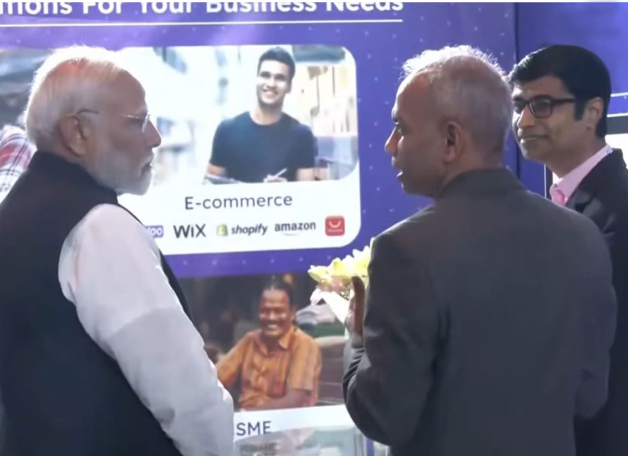Embark on the road to global success as an exporter and discover a world of opportunities with these easy steps
Becoming an exporter in India is not just a business venture; it’s a journey that can lead to global success and open doors to diverse markets. India’s rich tapestry of products and services offers immense potential for entrepreneurs willing to navigate the complex but rewarding world of international trade. In this comprehensive guide, we’ll take you through the steps to become an exporter in India, allowing you to tap into the world of global commerce.
Step 1: Research and Identify Your Product or Service
The first step on your journey to becoming an exporter is to identify the product or service you want to export. This requires meticulous research and a deep understanding of your chosen niche. Consider this example: if you’re planning to export Indian spices, research the international demand for specific spices, potential buyers in various regions, market competition, and consumer preferences. Ensure that your product or service meets international standards and regulations. Quality, pricing, and packaging are key elements to consider during this phase. Be prepared to adapt your product to meet the specific requirements of your target markets.
Step 2: Obtain an Import Export Code (IEC)
An Import Export Code (IEC) is your ticket to the world of international trade. This 10-digit code, issued by the Director-General of Foreign Trade, is mandatory for anyone looking to engage in export activities. You can conveniently apply for an IEC online through the DGFT website or via authorized agencies. Essential documents like your PAN card, Aadhaar card, and bank account details are required for this process. Once you have your IEC, you gain access to the global market, and it’s a critical step to legitimize your export business.
Step 3: Set Up Your Business
With the IEC in hand, it’s time to set up your export business. The structure of your business depends on your goals and preferences. For instance, if you’re establishing a sole proprietorship to export handcrafted Indian textiles, you need to register your business with the Registrar of Companies (RoC) or the relevant authorities. Ensure you’ve opened a dedicated bank account for your export business and secured all the necessary licenses and permits required to operate legally. Compliance with tax regulations, such as the Goods and Services Tax (GST), is essential, and you should ensure that your business adheres to these requirements.
Step 4: Develop Your Marketing Strategy
A robust marketing strategy is crucial for success in the export business. If you’re exporting Indian jewellery, consider the following: identify potential buyers in different global markets, research your competition, and carefully consider your pricing strategy. Trade shows and exhibitions are excellent platforms to showcase your product or service to a global audience. Establishing a strong online presence through a website and social media is essential for marketing your business. Use digital marketing tools to reach a wider audience and create engaging content to highlight the unique aspects of your products.
Step 5: Secure Export Orders
Once your business is established and your marketing strategy is in place, start reaching out to potential buyers. Consider various sales channels like business-to-business (B2B) and business-to-consumer (B2C) platforms. Negotiate the terms and conditions of export orders and ensure all required documentation, such as purchase orders, invoices, and packing lists, are in order. Compliance with all legal and regulatory requirements is vital at this stage. Be prepared to adapt your products to meet the specific requirements of international customers and provide exceptional customer service.
Read: Why is FIRA essential
Step 6: Arrange for Logistics and Shipping
Coordinating the logistics and shipping of your products or services to international markets is a critical aspect of becoming an exporter. If you’re exporting Indian spices, you need to establish a well-organised supply chain. Choose a reputable and efficient freight forwarder and ensure you have all necessary documentation, including bills of lading, customs declarations, and insurance policies. Make certain your products are packaged and labeled correctly and adhere to international regulations. Consider various transportation options, including air freight and sea freight, and choose the one that suits your business and your customers’ needs.
Step 7: Receive Payment
Your hard work comes to fruition when you receive payment for your export orders. Make use of secure and reliable payment methods such as letters of credit, bank transfers, or online payment gateways. Verify all necessary documentation, including bills of exchange, commercial invoices, and shipping documents to facilitate smooth transactions. Establish clear payment terms with your customers to ensure timely and hassle-free payments. In addition, consider currency exchange and fluctuations in the international market when dealing with payments in different currencies.
BriskPe’s Unique Value Proposition
Amid this journey, BriskPe emerges as an unparalleled partner. With a commitment to simplifying cross-border transactions, BriskPe offers a suite of advantages that set it apart:
- Local Virtual Accounts: BriskPe allows exporters to receive their export remittances directly in a local virtual account, streamlining the process and minimizing costs.
- Competitive Exchange Rates: By offering better currency exchange rates, BriskPe enhances profitability for businesses, irrespective of their size.
- Free FIRA (Foreign Inward Remittance Advice) Certificate: BriskPe’s revolutionary approach offers Free FIRA certificates for all payments, simplifying the compliance process.
- Upcoming Services: BriskPe’s commitment does not end here. Upcoming services promise to further elevate the cross-border payment experience.
Conclusion
Becoming an exporter in India is a journey that requires careful planning, research, and determination. By identifying your product or service, obtaining the necessary licenses and permits, developing a strong marketing strategy, securing export orders, arranging for logistics and shipping, and ensuring a secure payment process, you can pave the way to a successful export business in India. With the right approach and perseverance, the world of international trade can become a reality for Indian entrepreneurs, offering opportunities for growth and prosperity on a global scale. To know more, reach out to us








